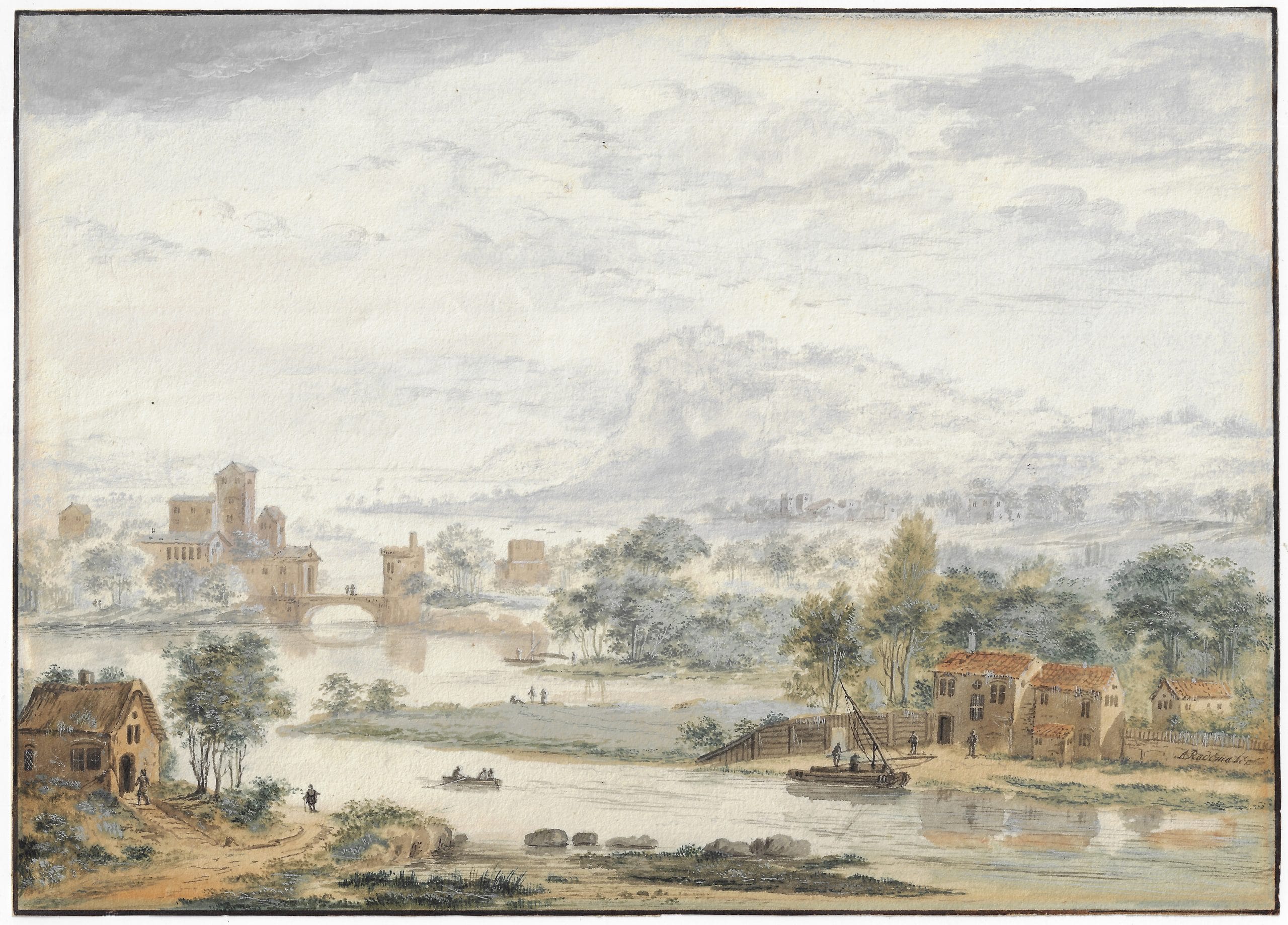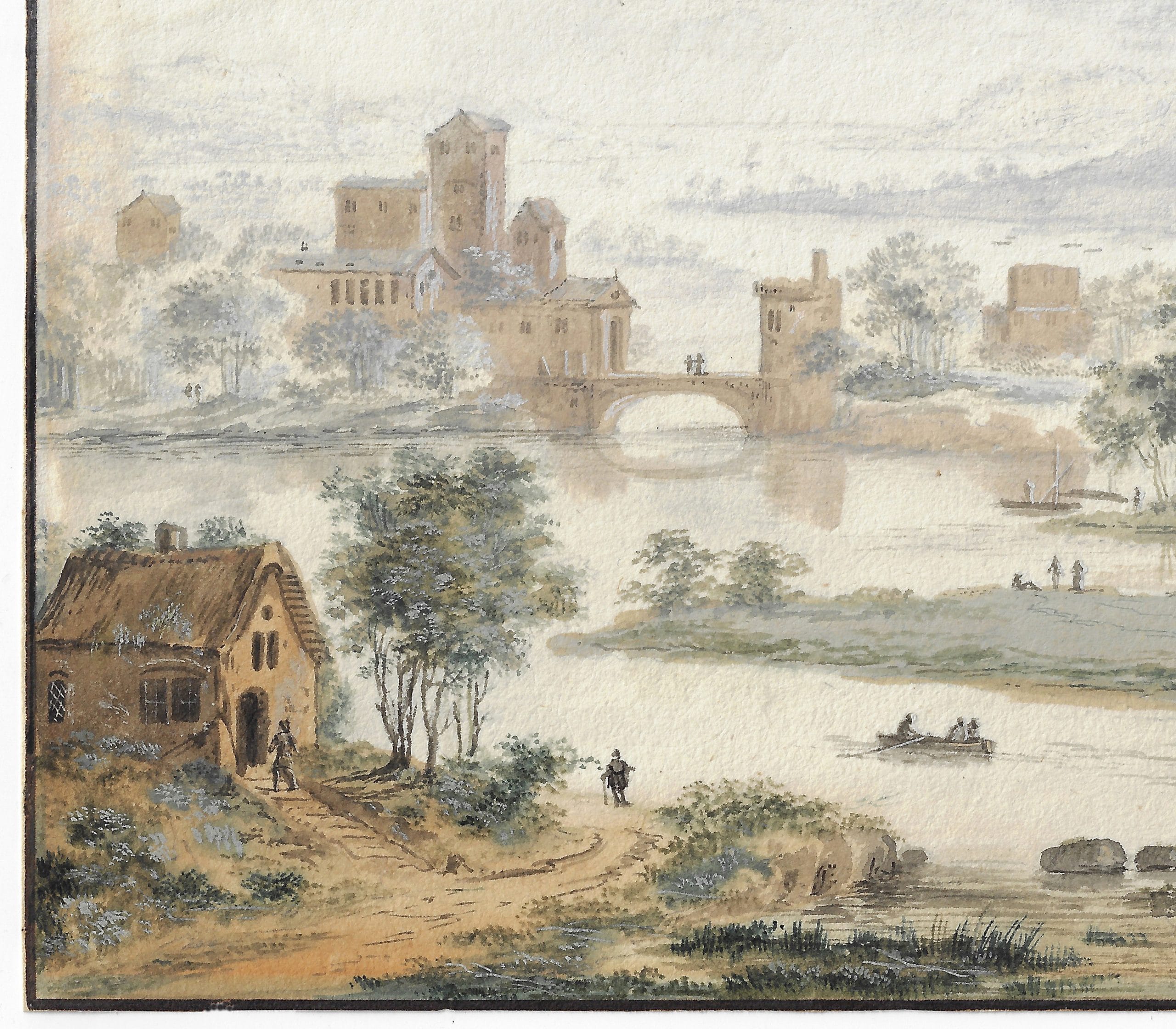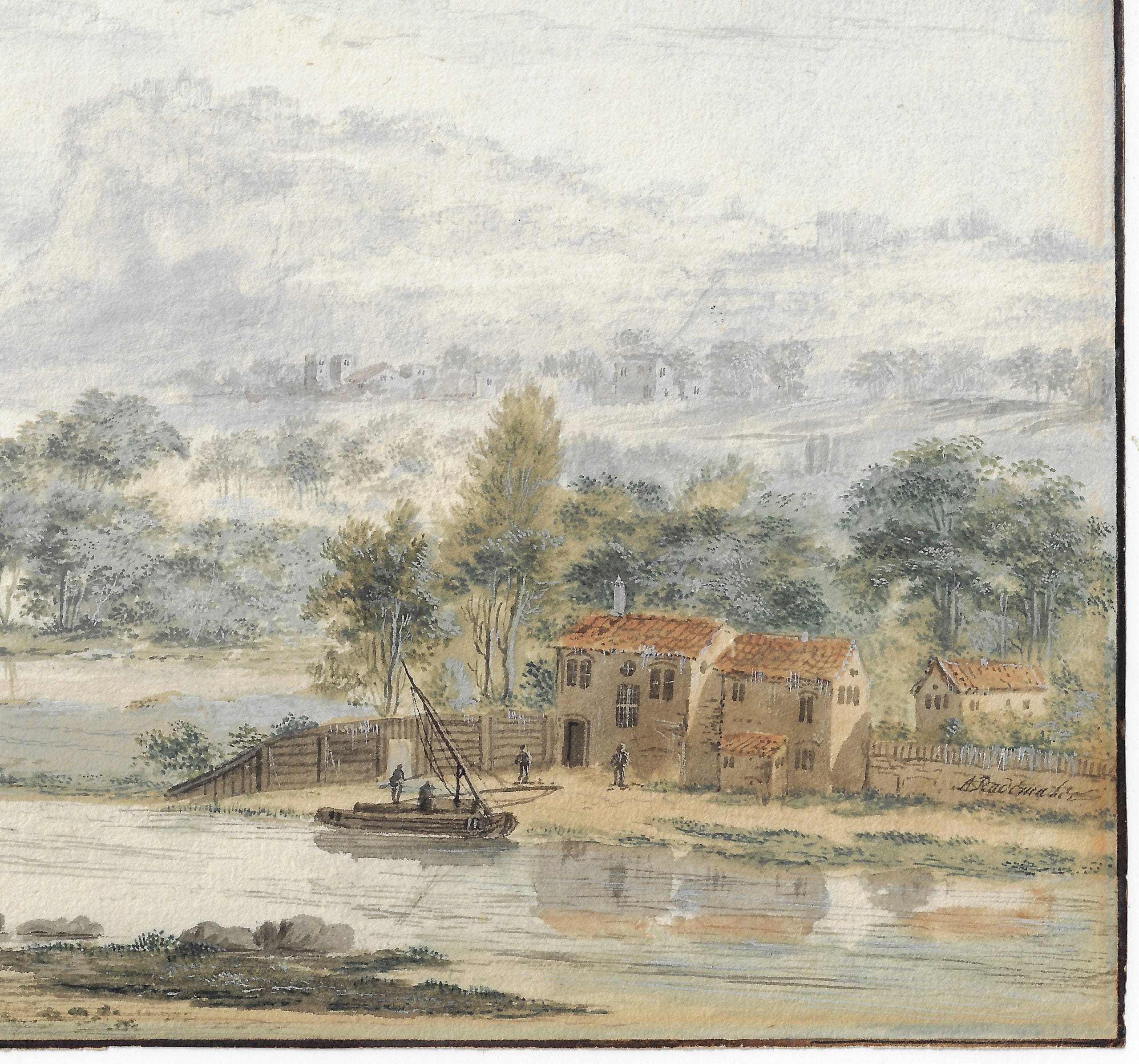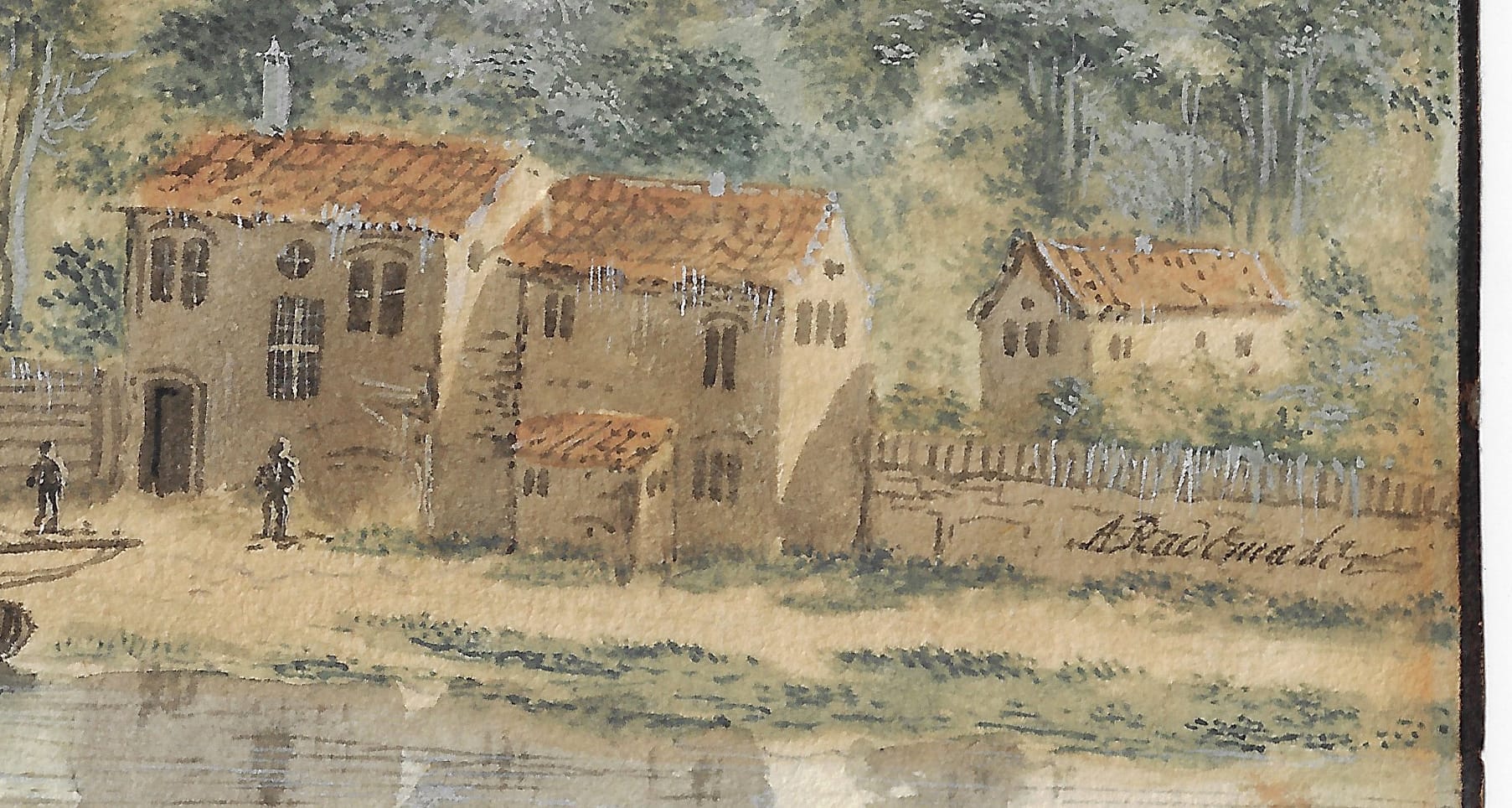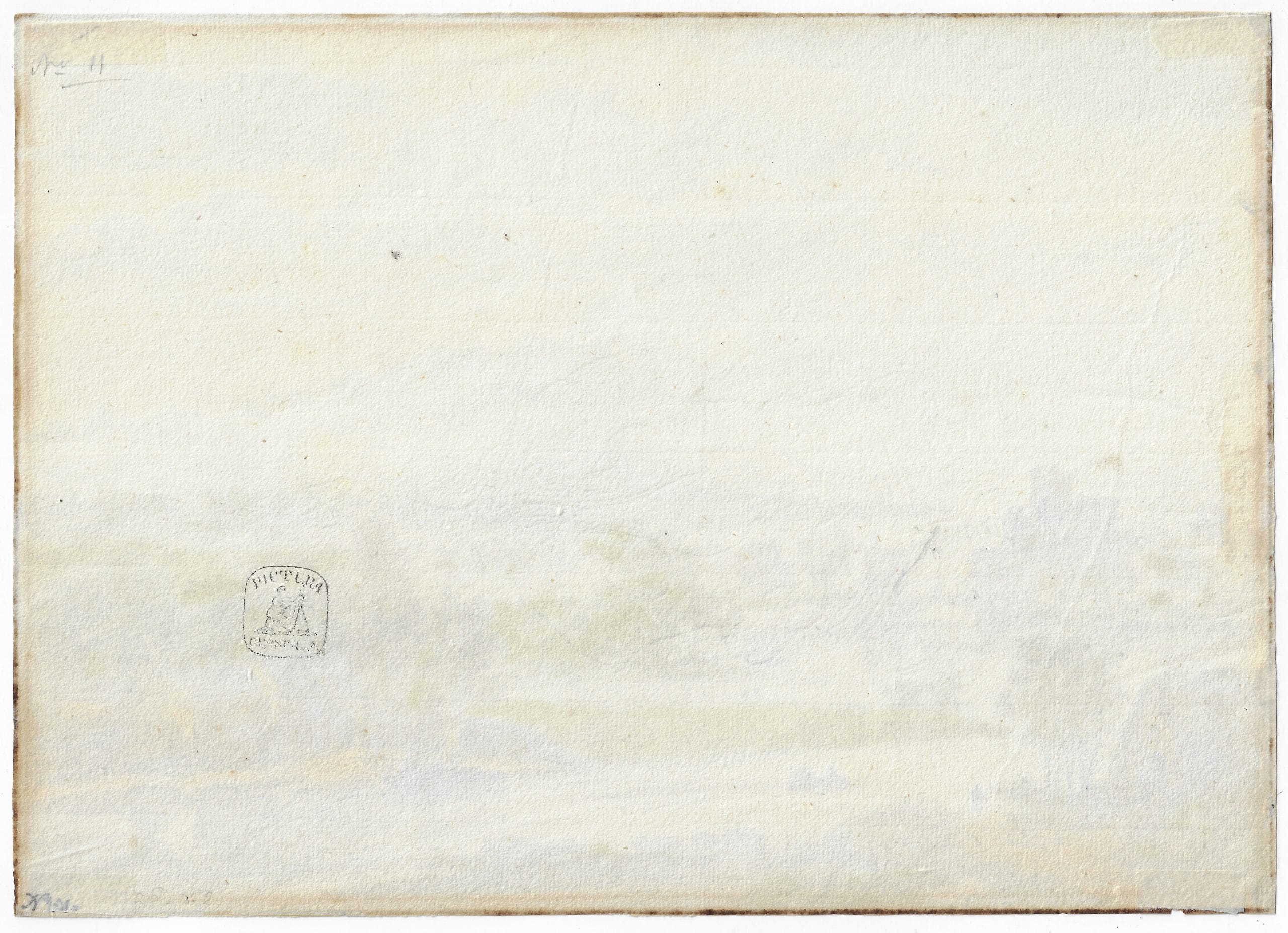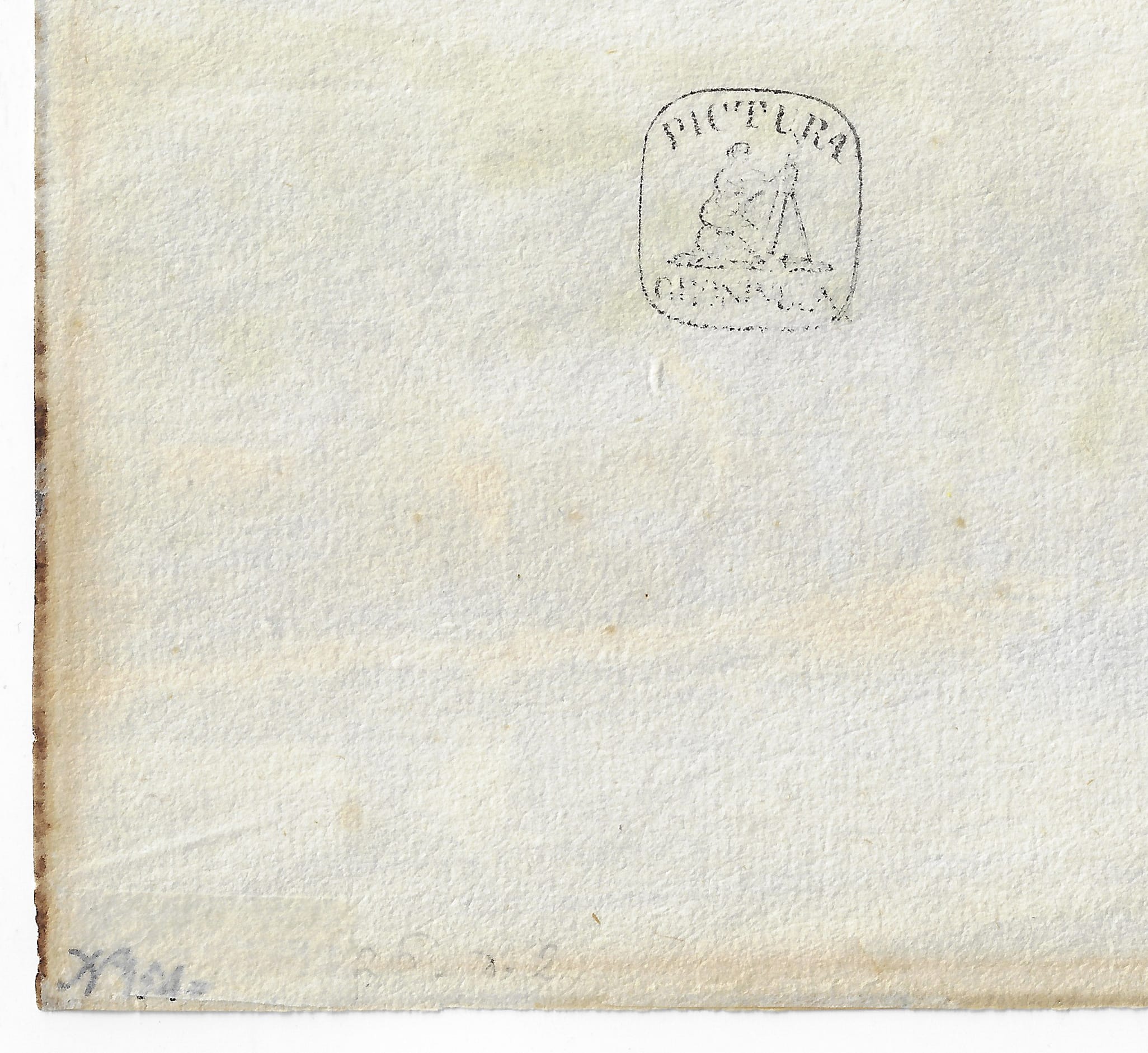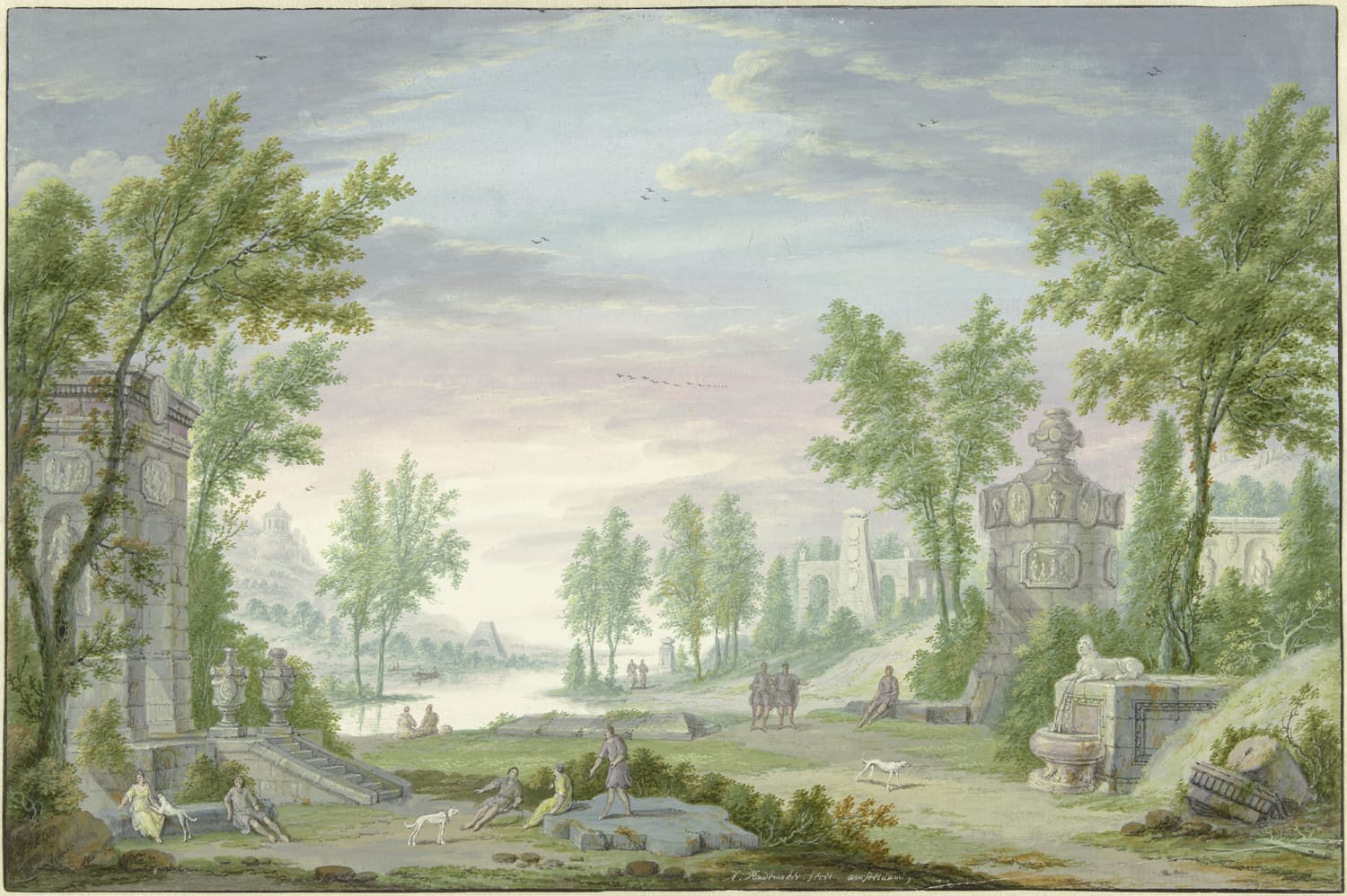ABRAHAM RADEMAKER (Lisse 1676/77 – 1735 Haarlem)
Abraham Rademaker (Lisse 1676/77 – 1735 Haarlem)
Panoranic Landscape with Figures
Watercolour, heightened with white, black ink framing lines, watermark crowned shield with French lily, 180 x 251 mm (7.1 x 9.9 inch)
Signed ‘A. Rademaker’ (lower right, black ink)
Inscribed ‘No 54=’, ‘ 26 d. 2’ and ‘No. 11’ (pencil, verso)
Provenance
~ Picture Groningen, Groningen (Lugt 2028)
~ Private collection, The Netherlands
***
Abraham Rademaker, son of the glazier Frederik Rademaker, appears to have been self-taught.1 When he posted the banns of his marriage in 1706 he was living in Amsterdam and gave his profession as an etcher. Rademaker specialised in topographical views, and also produced imaginary Arcadian landscapes. For his topographic work, he travelled around the country to draw cities, villages and country estates, but he also copied existing depictions. In 1724 he sold three hundred copper plates with topographic views which had been published under the title Kabinet van Nederlandsche Oudheeden (Cabinet of Dutch antiquities). Rademaker moved to Haarlem in 1730, where he joined the Guild of St Luke on 5 February 1732. The non-churchgoing Rademaker found his final resting place in the Weeskerk (Orphans’ Church) in 1735. His collections were sold in Amsterdam later that year, fetching more than 8,000 guilders.
Rademaker rarely dated his drawings, but a few exceptions show that he was already producing accomplished landscape gouaches around the year 1700. Collectors of ‘papierconst’ (paper art) were increasingly enamoured by detailed ‘paper paintings’ in gouache or watercolour from around 1680, which had already been pioneered some decades earlier by Hans Bol (1534–1593) and Friedrich Brentel (c.1580–1651). In the early eighteenth century artists such as Isaac de Moucheron (1667–1744), Jan van Huysum (1682–1749) and Willem Troost (1684–1752) were producing similar highly detailed works.
The artists’ biographer Johan van Gool praised Rademaker’s gouache landscapes in 1750: ‘These drawings, which he knew how to make with watercolour so naturally and powerfully, as though they were painted with oil paint, and which are so appreciated and in demand by the collectors of paper art, that they fetched high prices not only after his death, but during his own lifetime’.2
In this charming panoramic landscape, Rademaker has excelled at creating idyllic Southern landscapes that were so adored during the Silver Age of the 18th century, reminiscent of the Rhine views by the Golden Age painter Herman Saftleven. However, Rademaker managed to create a phantasy world which is entirely his own and immediately recognisable. Our landscape can be compared to an example in the Rijksmuseum, Amsterdam (fig.).3 A further comparable work is in the Graphische Sammlung of the Städelsches Kunstinstitut in Frankfurt.4
Our very well preserved drawing was previously part of the collections of the artists’ society Pictura in Groningen, founded in 1820. The society organised many exhibitions, both in the Minerva drawing academy and in the museum of antiquities. Drawings and prints from Pictura’s collection were sold in Amsterdam by the auctioneer R.W.P. de Vries in 1903 and 1906 to raise funds for a new society headquarters.5
SOLD
1. For the artist, see C.J. Kaldenbach, ‘Abraham Rademaker (1676/77-1735); nieuwe biografische gegevens en een verkenning van zijn getekende werk’, Leids Kunsthistorisch Jaarboek, 4 (1985), Leiden 1987, pp. 165-78 and Charles Dumas and Willem Beelaerts van Blokland, De kasteeltekeningen van Abraham Rademaker, Zwolle 2006.
2. J. van Gool, De Nieuwe Schouburg der Nederlantsche Kunstschilders en Schilderessen, The Hague 1750-51, vol. I, p. 404.
3. Watercolour, bodycolour, 205 x 310 mm, inv. no. RP-T-1893-A-2813.
4. Watercolour, bodycolour, 136 x 212 mm, inv. no. 3095; see Annette Strech, Nach dem Leben und aus der Phantasie, exh. cat. (Städelsches Kunstinstitut) 2000, cat. no. 90, repr.
5. F. Lugt, Les marques de collections de dessins et d'estampes, The Hague 1921, no. 2028.
